Still A Steady State Election?
The Presidential race seems to be returning to the state it was in before the political conventions.
Say what you will about Scott Rasmussen, but he is spot-on in his analysis of the state of the Presidential race even after the up-tick in the polls that Mitt Romney has experienced since last week’s debate:
We have reached the point in the campaign where media reports of some polls suggest wild, short-term swings in voter preferences. That doesn’t happen in the real world. A more realistic assessment shows that the race has remained stable and very close for months. Since last week’s debate, the numbers have shifted somewhat in Romney’s direction, but even that change has been fairly modest. Still, in a close race, a modest change can have a major impact. Over the past 100 days of tracking, Romney and Obama have been within two points of each other 72 times. Additionally, on 89 of those 100 days, the candidates have been within three points of each other.
Rasmussen Reports polling tends to show smaller swings than other polls for a variety of reasons. In 2008, we showed virtually no change during the final 40 days of the campaign. Then-candidate Obama was between 50% and 52% in our polling every single day. He generally held a five- or six-point lead, occasionally bouncing up to an eight-point advantage and only once falling below a four point-lead. This stable assessment of the race is consistent with the reality of what we know about voter behavior. Obama won the election by a 53% to 46% margin.
The Weekly Standard’s Jay Cost agrees with Rasmussen and cites five factors that have been true since the beginning of the race:
First, both sides will have locked in at least 47 percent apiece by Election Day. This runs close to the historical, long-run trend for both parties. Over the last quarter century, neither party has pulled in less than 45 percent of the vote, controlling for major third parties. If presidential politics were a football game, it would be fought strictly between the 45 yard lines.
Second, this leaves a tiny portion of the vote truly undecided. Excluding the big challenge from Nader in 2000 and Perot in 1992 and 1996, third parties have been able to pull in about 1 percent of the vote. So, if both sides have 47 percent and 1 percent will back somebody else, that leaves roughly five percent of the electorate up for grabs.
Third, these voters are not highly engaged in the electoral process, and they regularly make up their minds late in the cycle. They can, however, temporarily swing one way or the other because of shifts in the news cycle – e.g. Bill Clinton’s DNC speech or Romney’s debate performance.
Fourth, these disengaged voters are not happy with Obama’s performance in office. The matrix of issues that they care about – the economy, the deficit, and gas prices – do not favor this president. On top of that, they tend to disapprove of Obamacare.
Fifth, and most important, these voters are not going to fall into Romney’s lap. He has to convince them that, if they support him, there is a better chance that the country will improve than if they support Obama. Last Wednesday’s debate was important step in that direction, but it was just a step.
This is why Sean Trende was right on the money yesterday when he pointed out that, absent various, fleeting news shocks, this race has had a tendency to settle into a dead heat, with both candidates right around 47 or 48 percent of the vote.
Just about a week or two before the conventions, James Joyner noted that the race had entered a “steady state” phase where the polls, at least on the national level, were relatively unchanged. Looking at the polls, you saw that, as Rasmussen notes, that Obama and Romney were staying within no more than three points of each other in most polls, and most especially in the poll averages. There would be times when you’d see one of them get a bump that lasted a week or so, and you’d start to think that maybe the race was breaking open. As soon as that bump happened, though, it would be gone and they’d be back to a virtual, if not actual tie. It wasn’t until after the Democratic National Convention that things seemed to start to change. President Obama pulled ahead in both national and state-level polls and the trend through most of September made it seem as though the President might be headed for a fairly comfortable victory, if the trends continued. The trends didn’t continue, though. After last week’s debate, the national polls, and many polls at the state level, are all starting to point toward a very close election, perhaps as close as the 2000 election.
Just look at the poll average of the national race since the weekend before the Republican National Convention:
It almost looks as if, after a month where it seemed like the President was surging and just about to pull out in front for good, we’re returning back to the way things were before the election.
One example of that can be seen in the swing state polls I wrote about this morning. Consider this observation about the NBC/Marist polls about Virginia, Ohio, and Florida:
In all three states, the overwhelming majority of voters said they made up their minds before the debate — 92 percent in Florida and Ohio, and 91 percent in Virginia. Just 7 percent in Virginia, 6 percent in Florida, and 5 percent in Ohio said they decided after the debate. But in all three states, Romney won them.
The number of persuadable voters is incredibly small, perhaps smaller than it has been in any previous election at this point in the cycle. As I noted this morning, that poses a problem for Romney because of the fact of early voting. People who have already made up their mind are more likely to vote early to begin with, and we’ve already seen signs in states like Ohio that early voting is tending to trend toward President Obama, at least at this early state.
All of this suggests that, absent some dramatic development, we’re likely to see these two candidates in a close race over the next four weeks. For many reasons, that tends to favor the President.
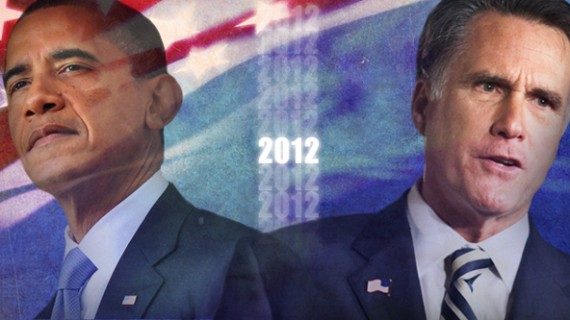
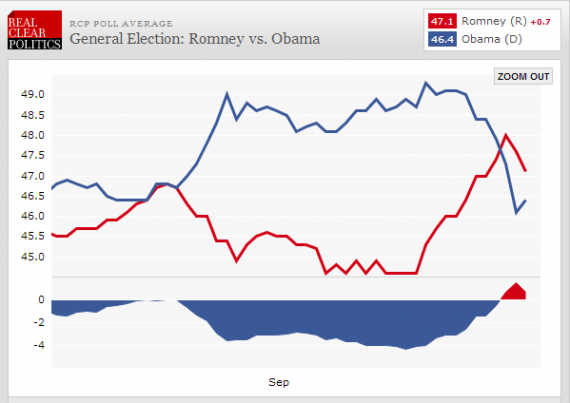

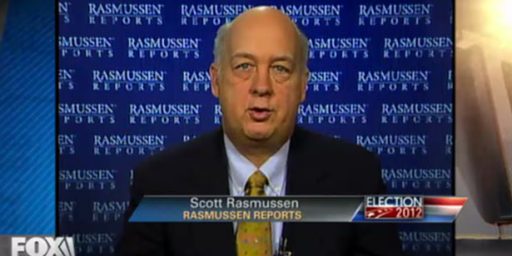
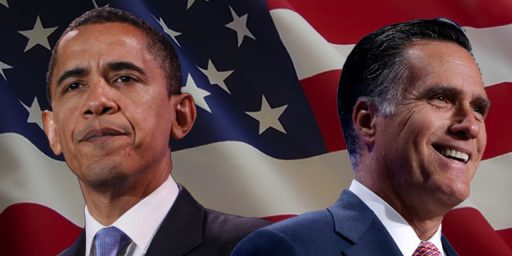

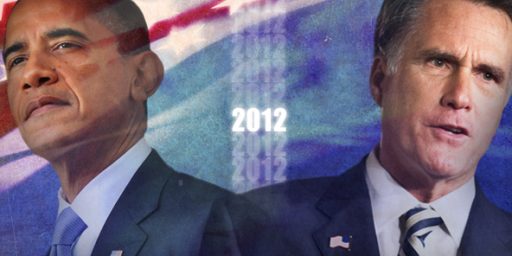
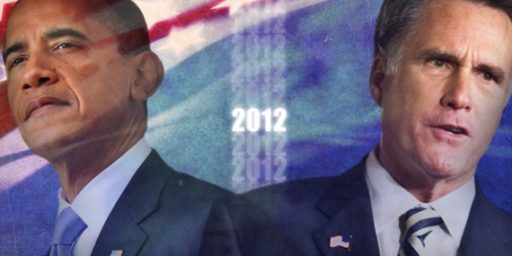
,… this just in ! No news to speak of !
Details at 11:00 ..
I’m polled out. None of them make as much sense as this kind of pole, I think.
The national polls seem more volatile than battleground state polls, which may be an artifact of enthusiasm moreso than voters changing their minds. With response rates being as low as they are, enthusiasm can have a disproportional on the topline numbers.
But, enthusiasm is going to be very important to the outcome of this race. This is looking like a base turnout election, with the variability falling on the Democratic side. The Republican turnout is usually pretty fixed and higher than the Democratic turnout, on a percentage basis.
Conversely, the Democrats have a bigger coalition, but struggle to get them to turn out. This is especially true in midterm elections.
In 2004, the Republicans did a better job of turning their people out than the Democrats did.
In 2008, the Democrats overperformed in turnout, and also broadened their coalition via both demographics (increasingly young and multicultural electorate) and swing voters disenchanted with Bush’s Republican party.
In 2012, the Democrats’ demographics are even better, but their appeal to swing voters is less and their ability to get their people out is the big unknown.
If Obama gets his people to turn out at the same rate they did in 2008, there will not be much drama. If Democratic turnout suffers from the same hangover as we saw in 2010, Romney will win. Somewhere in the middle, and we’ll be waiting to see what Nevada does.
I don’t think we have a steady state, but like Roger Ebert I am very disturbed by the nature of the turn.
Another Republican state representative in trouble for making pro-rape remarks to a reporter:
http://www.dailymail.co.uk/news/article-2216363/Roger-Rivard-Republican-state-representative-causes-outrage-quotes-father-telling-young-girls-rape-easy.html
“All of this suggests that, absent some dramatic development, we’re likely to see these two candidates in a close race over the next four weeks. For many reasons, that tends to favor the President.”
Well, Maybe so, maybe not. At any rate it looks like that Suffolk University pollster that pulled out of FLA, VA & NC because they were trending Romney was onto something as your favorite candidate seems to be losing control in FLA:
http://www.tampabay.com/news/politics/national/timesbay-news-9herald-exclusive-florida-poll-romney-51-obama-44/1255882
And, make no mistake, Mason-Dixon is not one of these pollsters sponsored by NY Times, CBS, MSNBC, etc that have these bogus Dem 10% samples. While there are unique issues in each state, if Romney is ahead by 7 and over 50% in FLA, I doubt Obama is ahead 7 – 10 in OH like that last bogus MSNBC poll.
@Stormy Dragon: In defense of Representative Rivard, I see his point when he adds all of the context–but there still must be about a million ways to say it better than he did.
I prefer the way that one of my friends was told by his grandmother:
“Passion is fleeting. True love may last a lifetime, but child support is until age 18.”
@Smooth Jazz:
In 2008, Mason-Dixon had McCain winning Ohio by 2 points. Obama won by 4.5, so they were only 6.5 points off. If they are that far off this time, that means the race is darn near a tie in Florida, with maybe a slight advantage to Romney. Which is exactly what it looks like if you do the smart thing and take the average of all the polls.
But you know what? Even if they are right about this and Romney is leading by 7, it doesn’t necessarily matter. Obama doesn’t need Florida. Romney does. He also needs North Carolina (he’ll probably get it) and Colorado (too close to put in either column), and Virginia (too close to call), and Ohio (still pretty clearly in Obama’s column). That’s still a pretty steep hill for Romney to climb.
@Smooth Jazz: “And, make no mistake, Mason-Dixon is not one of these pollsters sponsored by NY Times, CBS, MSNBC, etc that have these bogus Dem 10% samples. While there are unique issues in each state, if Romney is ahead by 7 and over 50% in FLA, I doubt Obama is ahead 7 – 10 in OH like that last bogus MSNBC poll. ”
Thanks for reassuring me – and I’m a Democrat 🙂
If you still feel the need to skew the polls, I’m happy.
Doug, I noticed that Nate Silver is missing from your post.
When one says “steady-state election”, a term that has no real meaning, I wonder why not just embrace the empirical evidence and conclude that fundamentals matter a lot more than political theater?